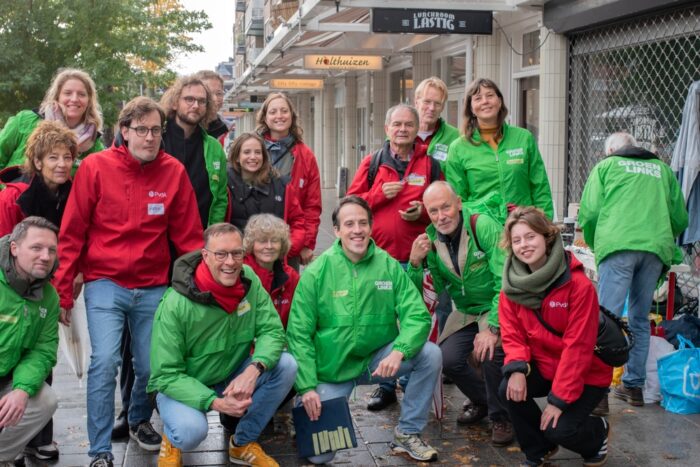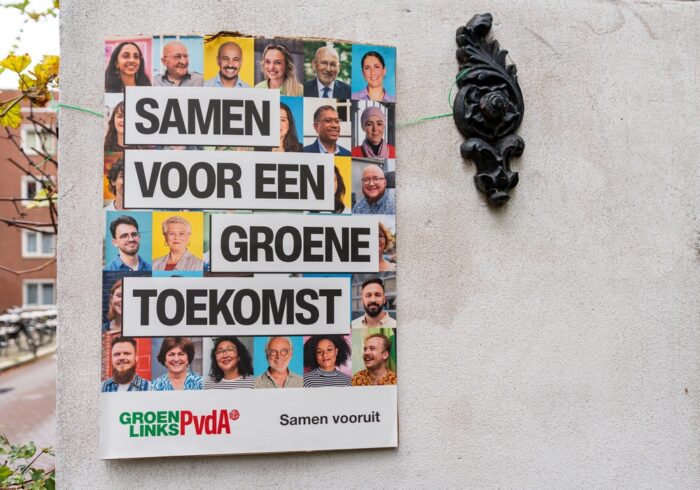The Progressive Post
Norwegian Labour success: the right policies, the right strategy, and a pinch of luck

The Norwegian Labour party and its leader Jonas Gahr Støre win the 2021 elections, toppling conservative Prime Minister Erna Solberg after her eight years’ reign. With a surge of the combined left, a red-green majority coalition is now possible, notably under a distinct Labour leadership, as it received more votes than the other two potential coalition partners combined. Following Denmark, Finland, and Sweden, the whole continental Nordics will now be governed by Social Democratic prime ministers.
On Monday 13 September, at precisely 21:00, everyone at the election night gathering of the Norwegian Labour party was staring intently at the two large screens. First there were audible sighs of relief and then, an instant later, loud cheers, shouts of “Jonas, Jonas, Jonas” and flags waiving all over the hall. This was the starting shot of a joyous night indeed in Oslo Congress Centre. Just after midnight, in front of the enthusiastic crowd, party leader Jonas Gahr Støre declared victory with what might be called a political knock-out.
With as much as 57,8 per cent of the votes cast in advance, the forecast published at 21:00 proved reliable in predicting the final results, obliging Solberg to step down after two election periods in power with shifting right-wing and centre right coalitions.
Obtaining 26,3 per cent of the popular vote, not only had Labour outperformed recent polls, but the five centre-left parties who wanted Solberg ousted collected an impressive 56,8 per cent, up from 50 per cent in the last parliamentary elections in 2017.
Almost as important, Støre’s ‘dream team coalition’, echoing Jens Stoltenberg’s government 2005-2013, and consisting of Labour, the agrarian Centre Party and The Socialist Left Party, acquired a majority in the Parliament, with 89 out of its 169 seats. Talks between these three parties started immediately, and are expected to last about a month.
It had looked quite likely that either the far-left Red Party, the Green Party, or both together could become the kingmakers of the Norwegian political scene, driving policymaking in a more radical or unpredictable direction.
However, although the Red Party passed the four per cent threshold for the first time, thus getting extra seats, it has little chance of gaining real influence. And the Green Party, after being strong in the polls in the early weeks of the campaign, finally stumbled, and ended with only 3,9 per cent, even below this important threshold.
Such a disappointing result for the Greens indicates that Labour succeeded in presenting a sufficiently convincing agenda for a fair green transition, together with the Socialist Left Party demobilising the Green Party. This is even more salient as the election campaign, in a country that relies heavily on oil extraction, was dominated by the climate and nature crisis, following the UN report in early August. Only the last week issues as welfare and work took centre-stage.
In addition, and making the results a firm success for Støre, Labour is larger than the combined size of its two friends in the ‘dream team’, as the Centre Party, which touched on 20 per cent in January in the opinion polls, collapsed over the summer, and ended up with 13,5 per cent. The Socialist Left fared well at 7,6 per cent.
These points of strength make it likely that Labour and Jonas Gahr Støre will lead the Norwegian government at least until the next general election in 2025. The coming weeks will show if this period starts off with a majority coalition, a minority coalition or the Labour party going it alone.
With hindsight, the Labour campaign, with strong efforts also by the youth organisation AUF and the trade unions, seems to have done little wrong. Learning from the miserable 2017 elections, both policies and communication has closed in on ‘ordinary people’, and not least those outside of the ‘Oslo bubble’; listening more, voicing families’ daily concerns, and directing campaign efforts, digital and physical, towards the third of the election districts where seats were most at stake.
At the same time, Labour and the combined left have received more help from the incumbents than expected. Visibly worn out after eight years of government and the 24/7 fight against the pandemic, Solberg’s cabinet seemed to fall apart over the last six months, with improbable mistakes harming both her personal as well as well as the government’s overall standing considerably. For instance, she was discovered not following the Covid-19 restrictions at her 60th birthday party, igniting a public uproar and ending up paying a fine of 2.000 euro.
The turnout was 77,1 per cent, down 1,5 percentage points from 2017, perhaps due to the widespread anticipation that Solberg would lose anyway.
Despite the well-earned euphoria however, and the large red-green swing, it needs to be mentioned that compared to the already weak 2017 result, Labour was one percentage point down in these elections. This is a kind reminder to not lose sight of the Norwegian Social Democracy’s long-term challenges.
Importantly, the Norwegian elections can be interpreted as a strong popular support for keeping the Nordic Model on track. Understanding its almost universal popularity in Norway, Solberg seemed to take a kind of gradual dismantling approach, undermining it with many, barely noticeable, steps. At last, however, when this became obvious as the years went by, she was dethroned.
Adding to this, the larger part of the Norwegian electorate was dismayed by Solberg reliance, inside or outside of her government, on the right-wing Progressive Party with their polarising rhetoric on migration.
For the first time since 2001, there will now be Social Democratic prime ministers in all Nordic countries – Denmark, Finland, Norway, and Sweden – with a combined population of 27 million. If the German SPD and Olaf Scholz win on 26 September, progressives in Northern Europe will have an unusual momentum.
Going back to election night, Labour had not experienced anything like this since Jens Stoltenberg’s win in 2005. The enthusiasm was written on people’s faces. Partying went on until deep in the night, allowing happy and tired politicians, advisors, and campaign staff, for a few precious hours to forget the hard, rewarding work ahead.




